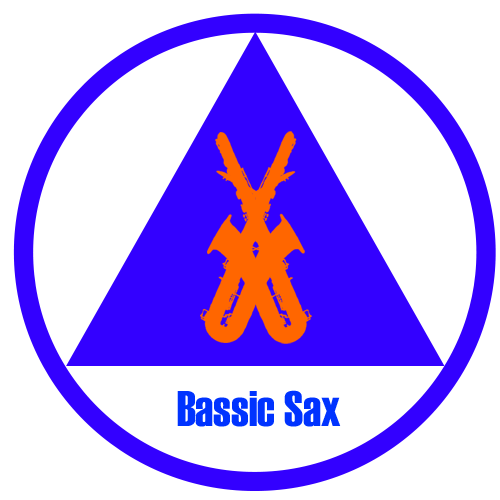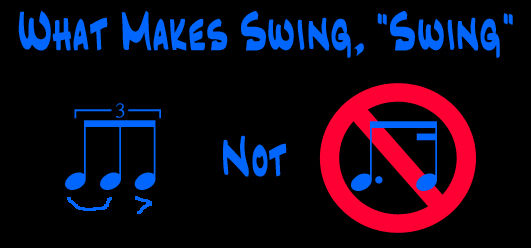
Yesterday a friend of mine came over who is also a saxophone player. I met this fellow a couple of years ago through my website. Let’s call him John. (Not his real name.)
John is from Vancouver, and he is also a vintage horn aficionado. He is a returning player, since he played in high school, but hadn’t picked up sax in over 20 years. Then one day circumstances were such that he decided to buy a horn again.
John bought a vintage horn, and ended up contacting me about it. Long story short, we ended getting together so that I might see said sax, and we found out that we have a lot more in common than a love for vintage saxophones. For 2 years now, John and I have been friends, and we get together whenever our schedules allow.
I really like John, and for the most part, I do like his taste in vintage horns. He has some lovely saxophones, and if I could, I’d sneak one or the other out the door. However, I think John would notice his favourite tenor missing very quickly. 😈
John is not my student, so I sometimes struggle with just how many errors of his I should correct. He never took private lessons while in high school, and none of his band teachers were saxophone players. Therefore, he has picked up many bad habits, and is lacking a great deal of in-depth saxophone-playing knowledge. For example, when I first met him, John didn’t know how many ways there were to play Bb, let alone when to use them all.
John is very much like a sponge, and greatly appreciates all the information I give him. However, I can tell that in no time at all, I can give him too much, and that he becomes overwhelmed. That’s why for the most part, I’ve stopped giving him unsolicited info. Or, I might give him one piece per get-together.
Yesterday I broke that rule, and ended up teaching him the correct way to use his index finger to play bis Bb, as well as working on his swing rhythms. Unfortunately John is one of those players who doesn’t have the innate ability to feel swing.
I’ve worked on this with John before. He is not alone, I’ve had lots of students in the past who have struggled with swing rhythms. If you’re a saxophone teacher, you’ve likely encountered this before in students as well.
While some students just seem to have a natural ability to feel the swing beat, others have to struggle more. For those latter students it can be tough slugging, as they work through exercises and song after song, in an effort to develop their internal swing-0-meter.
John tends to play his swing rhythm like many people do, with a dotted 1/8 and 1/16 note feel. This is just flat-out wrong. The swing feel is actually accomplished by this rhythm pattern involving a triplet:
Add incorrect tonguing to this incorrect rhythm pattern, and you’ve got something that is noway near a correct swing style. However, to learn swing today is easier than it was back in the stone age—or when I first took up playing. 😉
When I first started playing, my teacher had me using Lennie Niehaus’, Basic Jazz Conception Volumes 1-4, plus the duet book in the series. At that time, there was no sample how to play those tunes correctly. A player needed to work with a teacher, or an advanced player, to make sure that they were getting the attacks and releases, as well as the phrasing right. Today, these same volumes are still widely used. However, now they come with CDs.
The same of course, holds true for most books. Most come with CDs that have demo tracks, and/or play-along tracks on which you can silence the demo line.
Today’s materials make accessible to everyone, the correct phrasing, attacks and releases, and all the other subtle nuances that were formerly available only to students who took private lessons. However, these CDs do not take the place of a real, live teacher.
These CDs, DVDs, and other electronic media forms, are a good teaching tool, and are a valuable adjunct to private lessons. However, if you are serious about the saxophone, you really need to study with a saxophone teacher. Period.
No books, study materials, YouTube videos, etc. etc., are able to provide you with the feedback you need, in order to find out if you’re doing things correctly. That’s where the teacher comes in.
Good teachers also have the ability to present the material in more than 1 way. If you don’t understand it in 1 way, they will explain it to you in another. That doesn’t work either? Well, here’s another way of looking at it.
Anyway, I’ve pontificated enough on this point today. I’m feeling like a broken record.
So, to sum up: No matter where you’re at in your saxophone studies, you’ll never outgrow the need for a teacher. There’s always someone better than you out there, who you can learn from.




J. Dilla’s signature “drunk-feel swing” was created by his refusal to read the manual for his drum machine. Sometimes not knowing what you are doing can be an asset. 🙂
True. Sadly, I have never had one of those as my student. 😛